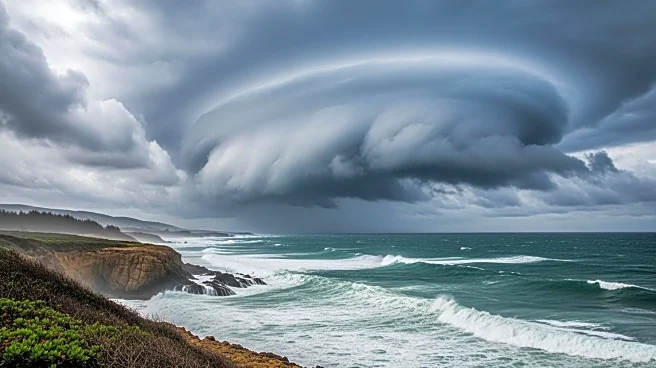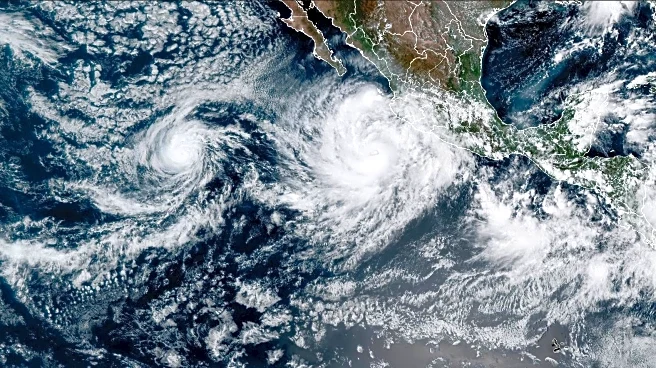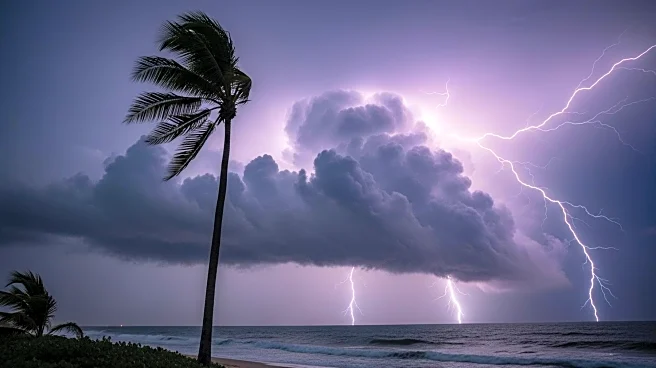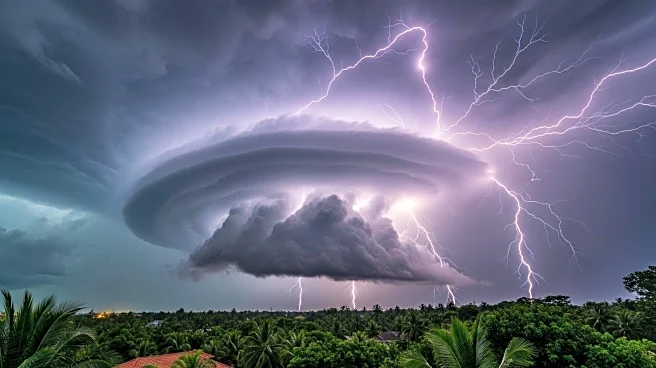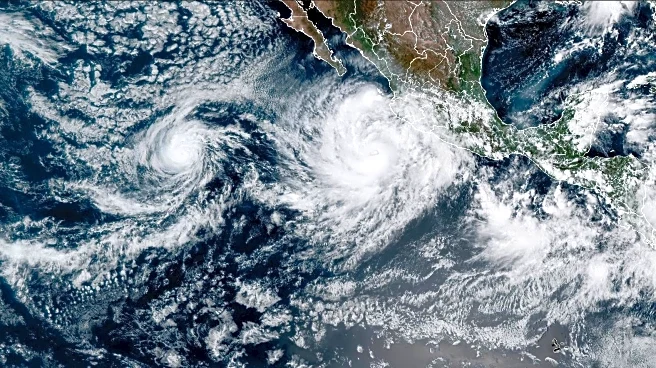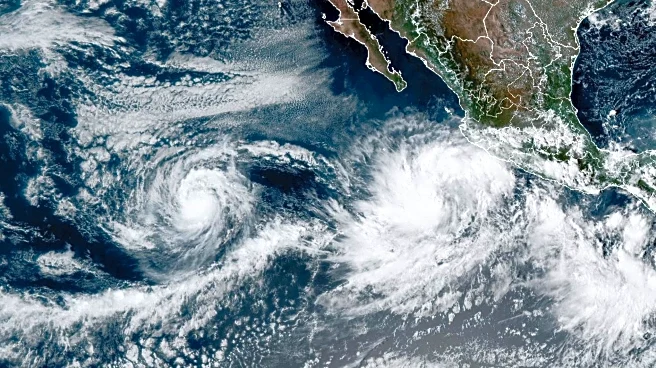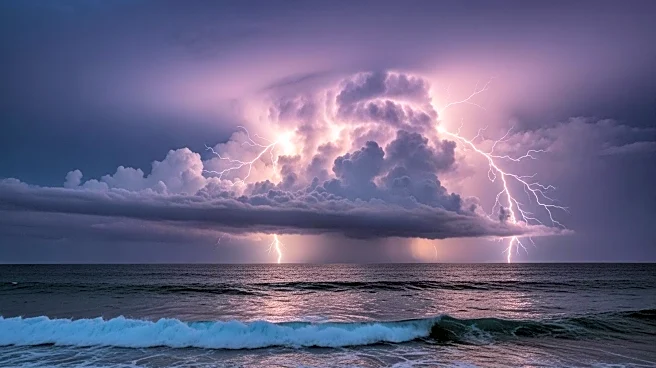What's Happening?
Hurricane Priscilla has formed off Mexico's Pacific coast, initially developing as a tropical storm on Saturday night. The storm prompted a watch for southwestern regions from Punta San Telmo to Punta Mita. By early Sunday, Priscilla was located approximately 305 miles from Cabo Corrientes, with sustained winds of 65 mph. It intensified into a hurricane by Sunday evening, reaching peak winds of 75 mph. Although Priscilla is not expected to make landfall, it is anticipated to cause hazardous swells and rip currents as it moves northwest along the coast towards Baja California Sur. Heavy rainfall is forecasted for Monday, with expected totals of 100-150 mm in Michoacán and western Guerrero, and local totals reaching about 200 mm. Colima and western Jalisco could experience 50-100 mm of rain.
Why It's Important?
The intensification of Hurricane Priscilla poses significant risks to coastal areas in Mexico, particularly in terms of heavy rainfall and potential flooding. The storm's trajectory along the coast could lead to dangerous sea conditions, affecting marine activities and coastal communities. The heavy rainfall forecasted could result in flooding and landslides, impacting infrastructure and local populations. The storm's development highlights the ongoing challenges faced by regions prone to tropical storms and hurricanes, emphasizing the need for preparedness and effective response strategies to mitigate potential damage.
What's Next?
As Hurricane Priscilla continues to track northwest, authorities and residents in affected areas are likely to remain vigilant and prepare for potential impacts. Emergency services may be mobilized to respond to flooding and other storm-related incidents. Coastal communities might experience disruptions in transportation and daily activities due to hazardous sea conditions. Monitoring of the storm's progression will be crucial to anticipate further developments and ensure timely warnings and interventions.
Beyond the Headlines
The formation of Hurricane Priscilla underscores the broader implications of climate change and its role in altering weather patterns, potentially increasing the frequency and intensity of tropical storms. This event may prompt discussions on climate resilience and the importance of sustainable practices to reduce vulnerability to such natural disasters. Additionally, the storm's impact on coastal ecosystems could have long-term effects on biodiversity and marine life.

